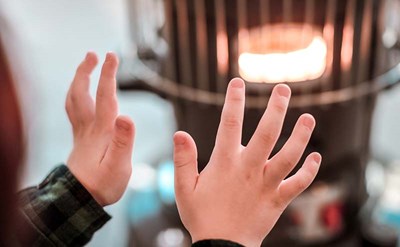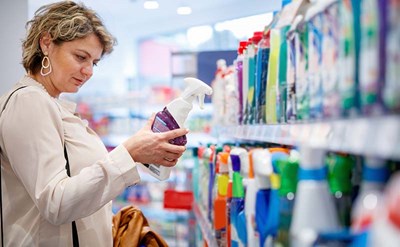Whether you drive across the country, or hike your favorite trail, emergency physicians recommend that you prepare a traveler’s first aid kit to help you respond to common medical emergencies.
You can also take a first aid class and learn CPR, and remember to always seek emergency care when you need it. If traveling with young children, an elderly person, or even a pet, it’s important to consider their needs as well.
Remember to follow the same precautions for medicines in your traveler’s first aid kit as with any medicine. Use as recommended by your physician, and make sure children do not have access to them—always use child safety caps. Check expiration dates, and throw away any expired medicines. If someone in your household has a life-threatening condition, carry appropriate medication with you at all times.
Before You Leave
Depending on the kind of trip you are taking and how strenuous it might be, consider getting a medical check-up from your physician. Work with your physician to develop a medical history form to include in your traveler’s first aid kit, listing any medical problems, operations, allergies, as well as a copy of your most recent EKG. If you wear corrective lenses or glasses, take an extra pair on your trip, and carry your lens prescription with you. Visit the Transportation Security Administration (TSA) web site at www.tsa.gov for instructions on traveling on airplanes with medications or special health care needs.
It’s a good idea to notify close friends and family members of your itinerary, and keep with you the names and phone numbers of emergency contacts back home so they can be contacted In case of a medical emergency.
Basic Kit Contents
Consider keeping a traveler’s first aid kit in your car. The contents of the kit can be tailored for other kinds of trips, such as air travel. Depending on the kind of trip, you may want to reduce or vary the contents (e.g., bring sunscreen and sunburn ointment when you go to the beach, bring insect spray for a camping trip). For the kit itself, use a tote bag that can hold all the items you need and is easy to carry.
- Any personal medications (over-the-counter or prescribed) or items recommended by your physicians (e.g., Epi-Pen for life-threatening allergic reactions)
- Acetaminophen, ibuprofen and aspirin tablets: To relieve headache, pain, fever and simple sprains or strains. Use liquid forms of acetaminophen and ibuprofen for infants, toddlers and young children who are not able to chew or swallow tablets. Have at least two aspirin tablets available at all times in case of heart attack (unless not recommended by your physician). Use appropriate dosages, and make sure the medicine is age appropriate. Due to the risk of Reye’s syndrome, aspirin (even baby/children’s aspirin) should not be used to relieve flu symptoms or be given to anyone under age 19.
- Antibiotic ointment: To prevent infection in burns, cuts and scrapes.
- Antifungal cream: To sooth itching caused by fungus.
- Antacid tablets or liquid: For indigestion.
- Antihistamine (or Epi-Pen as prescribed by a doctor): To relieve allergies and inflammation. Use appropriate dosages, and make sure the medicine is age appropriate.
- Hydrocortisone cream: To relieve irritation from rashes.
- Throat lozenges: For sore throats.
- Sunscreen: SPF 15 or higher, broad-spectrum.
- Bandages of assorted sizes: To cover minor cuts and scrapes.
- Thermometer (with case): To take temperatures. For babies under age 1, use a rectal thermometer and include petroleum jelly (to lubricate the rectal thermometer).
- Sharp scissors with rounded rips: To cut tape, gauze or clothes.
- Tweezers: To remove small splinters, foreign objects, bee stingers and ticks from the skin (see first aid manual for proper removal of ticks).
- Antiseptic wipes: To disinfect wounds or clean hands, tweezers, scissors and thermometer.
- Hand-purifier gel: To use where there is no access to soap and water. For effective sanitizing, be sure the alcohol level is greater than 60% and ideally, 90%. Use for disinfecting purposes only, not for the removal of dirt or other substance from hands.
- Handwipes: For quick removal of dirt or other substances. Babywipes are an excellent option. • Cold pack: To reduce swelling from an injury.
- Medical history form, which includes a list of all over-the-counter and prescription medications you and your family members are taking. Include copies of prescriptions and the names and phone numbers of your physicians back home.
- Enough medications (for your full trip plus at least two to three extra days).
- First aid information or manual.
For Hiking and Outdoor Travel
The more remote you go, the more prepared you should be for a medical emergency. Your kit should be designed for the type of trip you are taking and the number of people going. Include everything mentioned above, plus consider the following items. Also consider storing the kit in a waterproof container.
- Alcohol swabs: To disinfect wounds or tools.
- Antidiarrheal medicine.
- Cough medicine.
- Sterile eyewash (e.g., saline solution).
- Motion sickness medication.
- Insect repellent: Use as directed. Repellents appropriate for use on children should contain no more than 10 percent DEET and 20-30 percent DEET for adults, because the chemical, which is absorbed through the skin, can cause harm.
- Calamine Lotion: To relieve itching and irritation from insect bites and stings and poison ivy. • Ace bandages (assorted sizes): to provide support for strains and sprains.
- Triangular bandage: To wrap injuries and make an arm sling.
- Adhesive tape: To keep gauze in place.
- Bandage closures (one-fourth and one-inch sizes): To tape cut edges of bandages together.
- Elastic wraps: To wrap wrist, ankle, knee and elbow injuries.
- Gauze in rolls and two-inch and four-inch pads: To dress larger cuts and scrapes.
- Cigarette lighter: To sterilize instruments and to start a fire if needed (to keep warm or to make smoke to signal for help).
- Moleskin for blisters.
- Safety pins: To fasten splints and bandages.
- Disposable, instant-activating cold packs: For cooling injuries and burns.
- Latex-free gloves: To protect hands and reduce risk of infection when treating open wounds.
- Chargers for cell phone.
- Pocket mask for CPR.
- Small flashlight, compass and matches in waterproof container.
- Small knife (e.g., Swiss army-type).
- Mirror, small, unbreakable (for signaling).
- Whistle (for signaling). In addition, every car should have a road-side assistance kit, which includes such items as jumper cables, road flares, blankets, flashlight, batteries and enough extra water and non-perishable food for at least a day. Consider the specific needs of very young children and pets as well. Most of the items can be purchased together in a pre-fabricated first aid kit sold in most drug stores and grocery stores. It is also a good idea to carry a small fire extinguisher for camping trips.
 American College of Emergency Physicians
American College of Emergency Physicians







